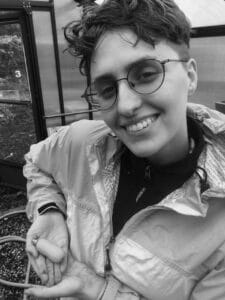News
The Trump Administration Wants to Gut The Clean Water Act
Policy•8 min read
Reported
Sentient has learned that the primary federal laboratory for farm animal welfare research has lost its probationary scientists to the mass firings.


Words by Grey Moran
The U.S. Department of Agriculture’s Livestock Behavior Research Unit, the primary federal lab dedicated to farm animal welfare research, has been decimated — with now just one scientist remaining on staff — by the Trump Administration’s mass firings of federal employees, Sentient confirmed with two former laboratory staff members. The unit’s research — over the course of three decades — helped develop the scientific measures for animal welfare on farms and informed some regulatory standards, such as Proposition 12.
“Without the scientists, the unit will be earmarked for closure, I’m sure,” Jeremy Marchant, who worked as an animal research scientist at the lab between 2001 and 2023 and maintains communication with the team, wrote in an e-mail to Sentient. “To see it be dismantled like this is heart-breaking and bad for U.S. farm animal welfare.”
The world-class research institution’s animal scientists — Jessica Pempek and Kaitlin Wurtz, who were both probationary employees — were both fired on February 13, leaving just Heng-wei Cheng as the sole scientist remaining. These terminations came at the directive of the Trump Administration’s Office of Personnel Management, which ordered federal agencies to lay off nearly all probationary employees — a sweeping, abrupt overhaul affecting hundreds of thousands of staff in the first few years on the job.
The loss of the probationary scientists gutted an already short-staffed laboratory, yet to hire replacements for Marchant and another scientist who left in 2024.
“The unit was already down from five scientists to three scientists,” Marchant tells Sentient, in an interview. “And then with the hiring freeze coming in straight away, it meant that we could no longer be replaced, and then two of the three [scientists] were still in their probationary period. So, now it’s down to one scientist who is due for retirement anytime soon.”
Sentient called Pempek on February 14, as she was packing her office to confirm her termination. She described the firings as “catastrophic” for farm animal welfare research.
Sentient could not get ahold of Wurtz by phone or e-mail. The auto-response to her U.S. Department of Agriculture (USDA) e-mail states, “I am no longer with the USDA-ARS Livestock Behavior Research Unit, and this email is no longer being monitored.” Following a brief phone call, Pempek did not respond to further interview requests.
The Livestock Behavior Research Unit, embedded in Purdue University in Indiana, is part of the in-house research branch of the USDA’s Agricultural Research Service (ARS), which is carried out through a network of nationwide research stations. Established in 1992, the unit has led federal research into the study of animal pain, nutrition, cognition and stress in response to the conditions on farms, helping develop this scientific field, and in some cases contributing to the establishment of better on-farm animal welfare standards.
“We did a whole range of quite applied studies to more fundamental studies. We’ve worked quite a lot on pain. We’ve looked at painful procedures. That’s a really important area, trying to demonstrate that certain things that get carried out on farms are painful and really need to be ameliorated with pain relief,” Marchant says.
This has included research into the gruesome mutilations and injuries routinely suffered by farm animals, including the pain experienced by livestock during and after castration (the removal of the testicles to prevent further breeding); the far-ranging psychological and physiological impacts of heat stress on farm animals and methods to increase cooling, and ways that farm animal stress is passed down to their offspring. The unit’s position within a land-grant university allowed the USDA to extend the reach of this work, collaborating with university professors and graduate students in the agricultural sciences. The researchers also developed presentations and other materials for livestock producers to help inform animal welfare protocols.
Notably, the laboratory’s research informed the legal justification for Proposition 12, California’s 2018 ban on extreme animal confinement, which was pushed for by animal rights and public health advocacy groups. This includes Marchant’s research documenting how gestational crates, metal enclosures to confine pregnant sows, affect the animal’s health and well-being; it was cited in an amicus brief to the Supreme Court in support of the law, which outlawed the sale of pork from pigs housed in gestation crates.
Even Elon Musk benefited from the laboratory’s collaborative research model that helped launch the careers of a wide-range of animal behavior scientists. This included Autumn Sorrells, who worked at the laboratory as a graduate student at Purdue University, which she attended between 2000 and 2003, according to her LinkedIn. She later became the head of animal care at Musk’s brain-computer interface company Neuralink, which was investigated by the USDA for animal cruelty and deaths while under her oversight in 2022.
Like Marchant, Sorrells’s research as a student focused on animal welfare for pigs and gestational crates under the supervision of the unit’s USDA scientists.
In general, progress on improving farm animal welfare standards has been an uphill battle, marked by slow, incremental changes. “So the pig industry has not been particularly proactive in dealing with pain management,” says Marchant, which was his primary research focus. “The cattle industry was beginning to be a bit more so. The poultry industry, I think, was probably the area where most inroads were made.”
For instance, the remaining scientist Heng-wei Cheng’s research helped show that trimming the beaks of birds to reduce feather pecking (pulling the features and skin out of another bird) was also painful, which helped inform alternative methods.
However, it is unclear how much longer Cheng will be able to carry out this research for the USDA-ARS now that he is the unit’s only scientist. “Usually ARS has a policy of, you know, if it gets down to a kind of certain size it becomes non-viable,” says Marchant. He notes that it might be possible for his unit to merge with the laboratory’s sister unit in Texas, the only other USDA-ARS laboratory that has some farm animal welfare research in its remit.
The USDA didn’t respond to questions about the financial and staffing status regarding both the USDA-ARS laboratories in Indiana and Texas. Cheng and the two scientists at the Texas unit also didn’t respond to requests to confirm details, or interview.
The news of the firings of probationary staff came during a particularly challenging time for the USDA’s small, close-knit farm animal behavioral research community. The Livestock Behavior Research Unit’s former research leader Don Lay Jr., passed away earlier this month, before he could learn of the dismantling of the research laboratory he helped build over 22 years. Marchant was helping plan a USDA announcement about Lay Jr.’s passing when he received a text from Pempek about how she and Wurtz were just terminated, he says.
As this research community grieves, Marchant anticipates that the broader world will soon feel the loss of the unit’s contributions to animal welfare knowledge.
“The industry will definitely feel its loss. Advocacy groups will feel its loss,” says Marchant, noting that while there is still privately funded research, USDA research into farm animal welfare was critical because it tended to be trusted by a wide range of stakeholders. “It’s going to be broad-reaching across anybody who’s involved in farm animals and the welfare of farm animals — it’s going to be felt by them, for sure.”
Update: This story has been updated to reflect include some additional details about a former lab researcher and her connection to Elon Musk’s company Neuralink.